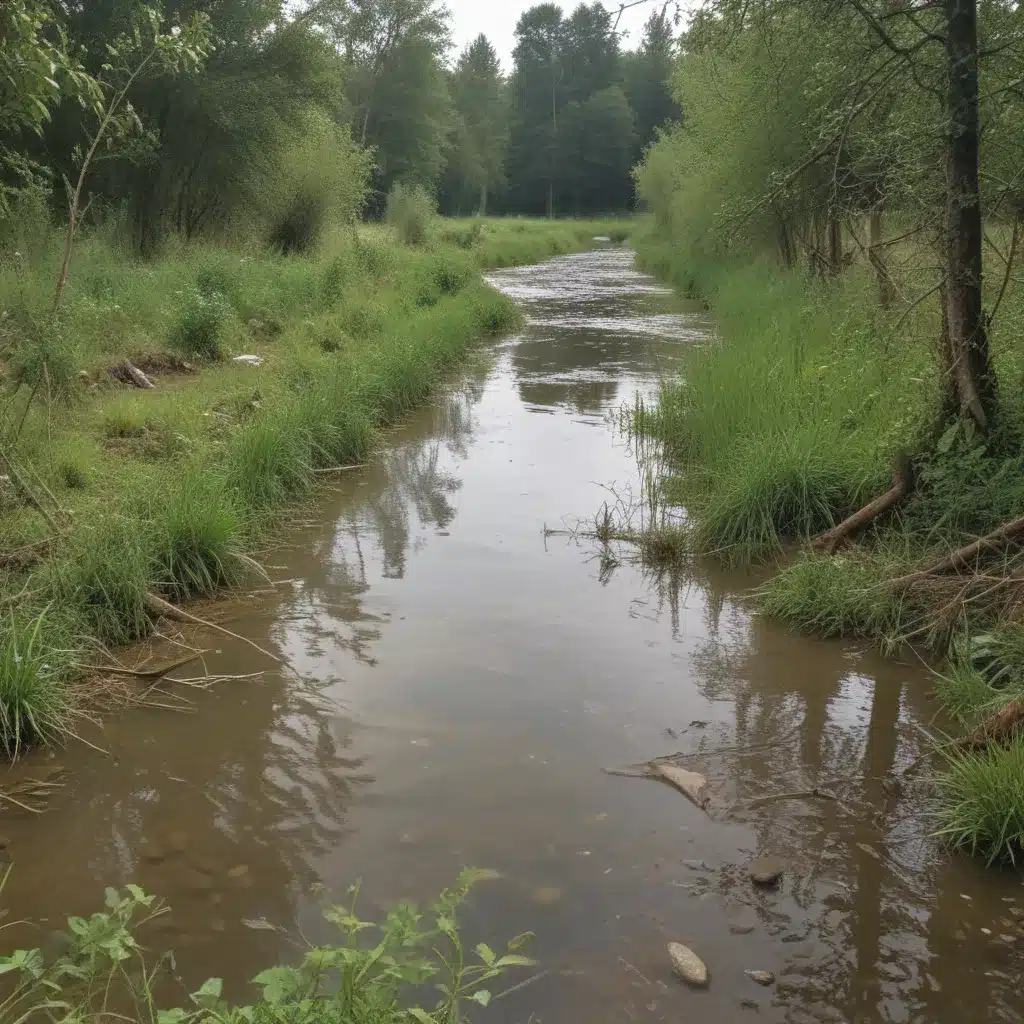
As an experienced flood control specialist, I understand the growing importance of nature-based solutions (NbS) in urban flood risk management (FRM). While these ecological measures can provide valuable flood mitigation, their broader impacts on local ecosystems might want to also be carefully considered. In this comprehensive article, I’ll explore how NbS for FRM can be leveraged to achieve synergistic “win-win” outcomes for both human well-being and ecosystem health.
Ecosystem Impacts of Nature-Based Flood Defences
Flooding poses severe threats to both people and the natural environment. As extreme flood events become more frequent due to climate change, urban areas are particularly vulnerable, with increasing populations exposed to flood hazards that can intensify damage and disrupt essential ecosystem services. To address these challenges, FRM strategies often incorporate green and blue spaces as ecological measures to enhance flood regulation capacity.
However, studies have shown that ecological measures focused solely on flood mitigation can have unintended negative consequences for surrounding ecosystems and local communities. For example, the placement of rain gardens may inadvertently disturb habitats for certain species, or the implementation of flood-resilient infrastructure without community engagement can displace vulnerable populations.
To avoid such pitfalls, NbS provide an opportunity to harness the natural services of local ecosystems to mitigate flood risks while also enhancing biodiversity and adapting to future climate conditions. The specific type and design of NbS interventions determine whether they can deliver multiple co-benefits for both people and nature.
Assessing Social-Ecological Interactions
Cities are complex social-ecological systems (SES) with intense interactions between human society and the environment. To better understand the potential of NbS for FRM, researchers have developed coupled SES frameworks that consider the reciprocal relationships between social and ecological factors.
These frameworks divide the SES into four key sub-systems: NbS Decision-making and Rules, Citizens and Stakeholders, NbS-related Ecosystem, and NbS Hydrological Performance. By examining the variables within each sub-system and how they influence one another, we can identify the mechanisms through which NbS interventions can achieve synergistic outcomes.
For example, biophysical factors like vegetation characteristics and soil properties directly affect the hydrological performance of NbS and associated ecosystem functions. Meanwhile, social factors such as risk awareness, investment schemes, and stakeholder knowledge can significantly influence the adoption and long-term success of NbS projects. Integrating these social and ecological perspectives is crucial for designing, implementing, and governing NbS in a way that balances flood risk reduction, ecosystem health, and community benefits.
Evaluating Tradeoffs and Synergies
While NbS have shown great potential to address both social and ecological challenges, existing research has revealed that solely targeting flood mitigation can still lead to unintended consequences. Certain ecological measures, such as engineered solutions or hybrid approaches, may inadvertently disrupt habitats, degrade water quality, or exacerbate social inequities.
Our analysis of the literature indicates that these trade-offs often arise from an insufficient consideration of the coupled social-ecological dynamics involved in NbS interventions. Key factors include:
Social Factors:
– Inequitable distribution of NbS benefits among different socioeconomic groups
– Limited public engagement and knowledge co-production in NbS planning and implementation
– Inadequate monitoring and management of potential social impacts
Ecological Factors:
– Narrow focus on flood regulation without adequate consideration of broader ecosystem functions and biodiversity
– Insufficient understanding of how NbS-related ecosystems respond to changing environmental conditions
– Lack of integrated, watershed-scale approaches to manage ecological connectivity and cumulative impacts
To address these trade-offs and unlock the full potential of NbS, researchers and practitioners might want to adopt a more holistic, social-ecological systems perspective. This involves:
-
Resilience Thinking: Assessing the dynamic capacity of NbS to withstand flood impacts and maintain essential ecosystem functions under future climate and environmental changes.
-
Linked Dynamics: Developing comprehensive tools to capture the interactions between human activities, social behaviors, and hydrological processes in NbS-related ecosystems.
-
Collaborative Governance: Enhancing multi-stakeholder engagement, monitoring, and adaptive management to balance the social, ecological, and economic trade-offs associated with NbS implementation.
By considering these crucial elements, cities can leverage NbS to achieve truly sustainable and equitable flood risk management that benefits both people and nature.
Harnessing the Power of Nature-Based Solutions
The growing body of research on NbS for FRM highlights their ability to provide a range of co-benefits beyond just flood mitigation. When designed and implemented through a coupled social-ecological lens, NbS can:
-
Enhance Flood Resilience: By restoring natural habitats and improving ecosystem functions, NbS can strengthen the capacity of local systems to withstand and recover from extreme flood events.
-
Promote Biodiversity: Integrating diverse native vegetation and habitat features into NbS can support thriving local ecosystems and enhance urban biodiversity.
-
Improve Human Well-being: NbS that prioritize community engagement and equitable access can deliver multiple benefits, such as recreational spaces, urban cooling, and reduced flood exposure for vulnerable populations.
-
Foster Sustainable Development: By balancing flood risk management, ecosystem health, and social equity, NbS can contribute to more holistic, nature-based approaches to urban planning and climate adaptation.
To fully harness the power of NbS, flood control specialists, urban planners, and policymakers might want to continue to advance our understanding of the complex social-ecological interactions at play. By embracing a systems-level perspective and collaborative governance, we can unlock the true potential of NbS to deliver lasting, “win-win” outcomes for both people and the environment.
I encourage you to explore the wealth of resources available on the Flood Control 2015 website, which provides detailed guidance and case studies on the design, implementation, and maintenance of innovative flood control systems, including nature-based solutions. Together, we can build more resilient and sustainable communities that coexist in harmony with the natural world.
Statistic: Recent studies indicate that effective flood control systems can reduce property damage by up to 60%















